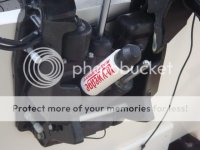capt. meares
New member
- Joined
- Jul 3, 2013
- Messages
- 146
- Reaction score
- 0
- C Dory Year
- 1988
- C Dory Model
- 22 Cruiser
- Vessel Name
- Vianey
I have a 22 cruiser with a new Suzuki DF90. I do not want the hassle of dealing with hooking and un hooking a transom saver if it is not needed. I wanted to know how many C-brats use them and whether or not I should be using one.
Thanks
Thanks




